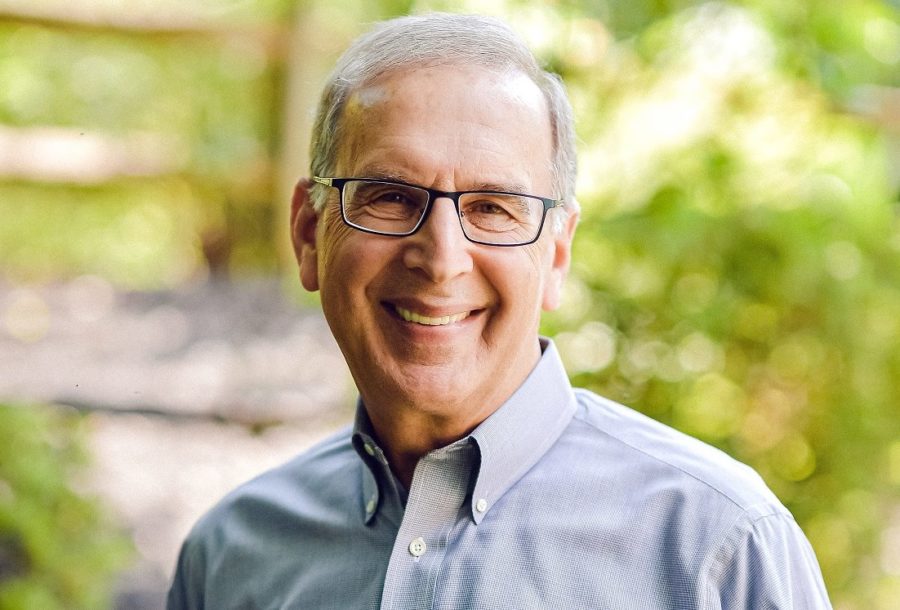
By Lori Silberman Brauner
“I think about synagogues as containers that use Judaism as a toolkit to advance human flourishing,” says Rabbi Sid Schwarz. “I don’t think the job of the synagogue is exclusively to get people to keep kosher and do Shabbat.”
Since becoming founding rabbi of Adat Shalom Reconstructionist Congregation in Bethesda, in 1985, the 67-year-old Schwarz has gone on to launch one Jewish organization after another.
“I’m kind of a serial entrepreneur,” he says. “I keep creating things.”
Schwarz, a Rockville resident, has overseen many passion projects and held roles within both established “legacy” organizations and more start-up Jewish projects. That includes Kenissa, which connects individuals who are leading efforts to reimagine Jewish life and community; and Clergy Leadership Incubator (CLI), a two-year program to support and encourage rabbis serving congregations or other spiritual community models in the areas of innovative thinking, change management and institutional transformation.
He was offering retreats for rabbinical students from across the denominational spectrum, “and I was noting that as they went out into the field to take fairly conventional jobs, within a few years, a lot of them were crashing and burning — because the gap between the vision of the rabbinate that I was putting out and the synagogues that they were being hired to lead was so vast. They didn’t know how to bridge that gap.”
Through CLI, a team of 20 senior rabbinic fellows mentor the 20 selected rabbis, who are charged “with developing an innovation project that can change the communal culture of the institution that they’re serving.”
Studies such as those conducted by the Pew Research Center tell you that “Jews are not running to classic worship services,” especially during the COVID era when they can log onto Zoom and watch a program “in a half or third of the time,” he says.
The message, therefore, needs to be “let me see what you need and help you grow as a human being and as a Jew” — as opposed to “services next Shabbat are at 9:30 in the morning, please be here.”
The creation of Kenissa followed the publication of Schwarz’s “Jewish Megatrends,” which argued that Judaism “is more than simply a religious phenomena. There are many ways that people express their Judaism. And in fact, the few studies told us that more and more Jews are engaging in their Jewish identity outside of synagogues than inside.”
But Schwarz needed more data to flesh out these conclusions, and secured foundational funding “to essentially create a laboratory to explore what was out there. And that included mapping the phenomenon of Jewish start-ups that were reinventing Jewish life and community.”
Now “we have a database of over 400 organizations that cluster around the six sectors that we identified in Kenissa — social justice, Jewish learning, spiritual practice, arts and culture, and Jewish environmentalism” — which “attract ‘next-gen’ Jews in ways that legacy organizations fail to do.”
He stresses that he’s “not looking to undermine or sabotage legacy Jewish community — I’ve come out of that community, it does a lot of wonderful things. But it’s way behind the curve in terms of reaching the next generation of American Jews. What we’re working on is building bridges between the legacy sector and these start-ups. Because I think each has something that the other one needs. The legacy sector has expertise, and organizational know-how and resources and the Kenissa network and groups like it essentially have an approach to Jewish life that is far more compelling to Jews in their 20s and 30s. Together, it could be a powerful combination,” he says.
“The way the Jewish mainstream thinks is that we have this great tent called the organized Jewish community. It does great stuff. If people outside the tent simply knew what they did, they would come into the tent, and we welcome them to come in, on our own terms,” which means that Jews who have experienced “a sense of exclusion” because of their sexual preferences, gender or attitude toward Israel can feel alienated.
“There are tens of thousands of Jews who are doing Jewish outside the tent of the organized Jewish community today. They’re doing amazing things,” he says, adding,“When are the people in the tent going to take down the flaps, walk out of the tent, look around a little bit and realize that Jewish life can be reinvigorated if we didn’t have those boundaries?”






Flat disagree. First, Judaism inside the tent and then Judaisn outside the tent. Without the Tent, there is littke Jewish about these activities.